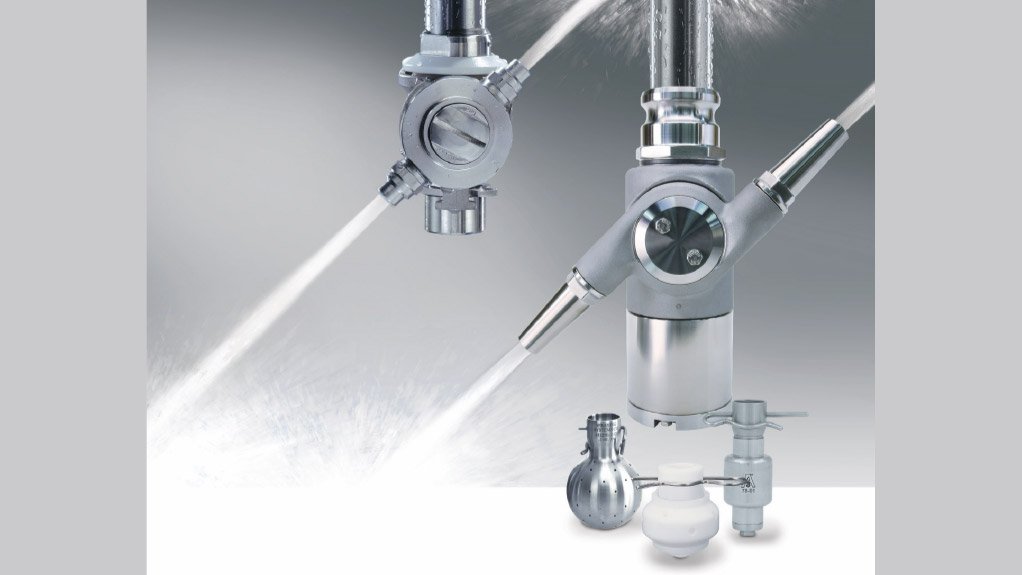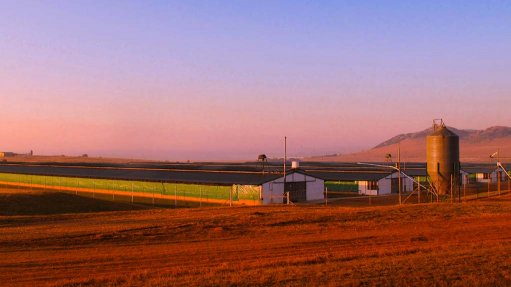A Guide to Tank Cleaning Automation
Automating the cleaning of tanks, totes, vats, vessels or any other type of container offers many benefits. Typically, the top reason to automate is to improve cleaning thoroughness. However, the reduction of maintenance time/production downtime is also a compelling and motivating factor. Other common reasons include improving worker safety, reducing consumption of expensive cleaning chemicals/solvents and lowering wastewater disposal costs.
Proper selection of a tank cleaning solution requires collaboration between process plant personnel and the tank wash equipment manufacturer. Cleaning objectives are specific to a manufacturing process and should be established by plant personnel. A variety of options is available — tank wash nozzles for clean-in-place (CIP), motorized tank washers, automatic retractable motorized tank washers and turnkey systems offering complete automation — and it is essential to consider your short- and long-term needs to ensure you make the right buying decision.
Cleaning Criteria
- What is the residue to be cleaned?
- What cleaning is required to remove the residue?
- What is the temperature of the cleaning liquid?
- What is the reason for cleaning?
- What level of cleaning is required?
- What are the dimensions of the tank?
- Are there obstructions within the tank?
Process improvement and cost reduction are key motivators for any plant. As a result, automated tank cleaning is increasing in popularity. A change in tank cleaning methods can result in dramatic increases in production uptime.
Nearly all totes, tanks, vessels and vats contain product residue that must be removed between batches or at routine intervals in continuous operations.
Many plants find they can save tens of thousands of Rands annually by automating their tank cleaning process. Facilities with several tanks have reported savings of more than R500,000 per year. Determining if you could benefit similarly through automation begins with a close look at your cleaning objectives.
Automated tank cleaning Fundamentals
Flow Rate
Use the lowest flow rate possible to achieve your cleaning objectives. The lower the flow, the less liquid required, less effluent for disposal and less energy consumed.
Spray Pattern
Most spray balls and tank wash nozzles generate a solid stream, flat fan or full cone spray. Your cleaning requirements will determine the pattern you need. In general, under equal operating conditions, solid stream sprays provide the greatest impact, followed by flat fan and full cone sprays. Static spray balls provide the lowest cleaning efficiency.
Spray Coverage
Typical coverages include 180° up, 180° down, 270° up, 270° down and 360°. Use the least amount of coverage required to achieve your cleaning objectives and minimize water usage and wastewater disposal.
Shadowing
When a spray cannot directly reach part of the vessel because of an internal obstruction, it is called shadowing. Common obstructions include mixers, agitators or filling tubes for example. Multiple TankJets may be required to overcome this
Spray Distance
Spray distance, sometimes referred to as “throw”, is defined as the distance between the spray exiting the nozzle orifice to the spray hitting the target surface. The spray coming from the nozzle should reach the walls of the tank vessel.
Spray Impact
How much impact required depends on a variety of factors — the residue, the cleaning chemicals, the water temperature and more. Hard-to-clean residues require a higher level of impact than residues that are easily rinsed. And solid stream rotating tote cleaning nozzles should be used in these instances.
Cleaning Cycle Time
There are four common cleaning stages. In many cases, if cleaning effectiveness falls short, more thorough cleaning can be achieved by extending the time of one or more stages.
- Pre-Rinse
- Cleaning
- Post-Rinse
- Sanitizing
Depending on the application, cleaning can be done in as little as a minute or take up to 45 minutes or more. Most cleaning cycles fall within the 10-to-30-minute range.
CIP or Portable Motorized and Fluid-Driven (Turbine) Tank Washers
Advantages
- High-impact force cleans even the toughest residue.
- Requires less water for effective cleaning.
- Accommodates a wide variety of nozzles so units can be used with multiple tanks.
- The units are lightweight and can be easily moved from tank to tank if desired.
- If CIP is preferred, multiple mounting options are available including a sanitary tri-clamp flange.
- The spray head fits through small diameter tank openings.
- Multiple shaft lengths are available to accommodate a wide range of tank sizes.
Disadvantages
As with any mechanical device, some maintenance is required.
The need for a separate motor instead of using only the cleaning liquid to rotate the nozzle. Turbine-driven nozzles, however, do not need a separate motor.
Debris in water is a hazard and filtration may be required.
Usually, priced higher than fixed spray nozzles or fluid-driven reactionary force and constant speed nozzles.
Automation Pays Off Quickly
Automation results in cleaner tanks, repeatable cleaning, decreased risk of product contamination and reduced cost of consumables. But, at what cost?
Automation is often associated with the words “expensive” and “costly.” However, low-pressure CIP systems are quite economical since the cost of spray balls and nozzles is very reasonable, however typically require much longer cleaning times, and large amounts of water or cleaning chemicals. Motorized tank washers and automated tank cleaning systems are more costly, but offer quicker more efficient cleaning cycles, and offer a quick return on investment.
Many users of automated tank cleaning products and systems report a payback period of just a few months. The gain in production uptime and the reduced labor cost comprise most of the savings. The reduced cost of chemicals, water, energy and wastewater disposal also add up quickly and contribute to the short payback period.
Is automated tank cleaning for every manufacturer? In most instances the answer is yes. However, it is important to thoroughly research all the automation options available to ensure you will achieve your tank cleaning objectives as efficiently and economically as possible.
Monitor Engineering Pty Ltd
011 618 3860
Comments
Press Office
Announcements
What's On
Subscribe to improve your user experience...
Option 1 (equivalent of R125 a month):
Receive a weekly copy of Creamer Media's Engineering News & Mining Weekly magazine
(print copy for those in South Africa and e-magazine for those outside of South Africa)
Receive daily email newsletters
Access to full search results
Access archive of magazine back copies
Access to Projects in Progress
Access to ONE Research Report of your choice in PDF format
Option 2 (equivalent of R375 a month):
All benefits from Option 1
PLUS
Access to Creamer Media's Research Channel Africa for ALL Research Reports, in PDF format, on various industrial and mining sectors
including Electricity; Water; Energy Transition; Hydrogen; Roads, Rail and Ports; Coal; Gold; Platinum; Battery Metals; etc.
Already a subscriber?
Forgotten your password?
Receive weekly copy of Creamer Media's Engineering News & Mining Weekly magazine (print copy for those in South Africa and e-magazine for those outside of South Africa)
➕
Recieve daily email newsletters
➕
Access to full search results
➕
Access archive of magazine back copies
➕
Access to Projects in Progress
➕
Access to ONE Research Report of your choice in PDF format
RESEARCH CHANNEL AFRICA
R4500 (equivalent of R375 a month)
SUBSCRIBEAll benefits from Option 1
➕
Access to Creamer Media's Research Channel Africa for ALL Research Reports on various industrial and mining sectors, in PDF format, including on:
Electricity
➕
Water
➕
Energy Transition
➕
Hydrogen
➕
Roads, Rail and Ports
➕
Coal
➕
Gold
➕
Platinum
➕
Battery Metals
➕
etc.
Receive all benefits from Option 1 or Option 2 delivered to numerous people at your company
➕
Multiple User names and Passwords for simultaneous log-ins
➕
Intranet integration access to all in your organisation





















